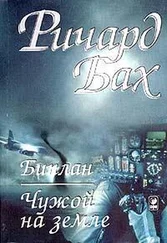Ричард Бах - Biplane
Здесь есть возможность читать онлайн «Ричард Бах - Biplane» весь текст электронной книги совершенно бесплатно (целиком полную версию без сокращений). В некоторых случаях можно слушать аудио, скачать через торрент в формате fb2 и присутствует краткое содержание. Город: New York, Год выпуска: 2012, ISBN: 2012, Издательство: Scribner, Жанр: Современная проза, на английском языке. Описание произведения, (предисловие) а так же отзывы посетителей доступны на портале библиотеки ЛибКат.
- Название:Biplane
- Автор:
- Издательство:Scribner
- Жанр:
- Год:2012
- Город:New York
- ISBN:978-1-4516-9744-5
- Рейтинг книги:3 / 5. Голосов: 1
-
Избранное:Добавить в избранное
- Отзывы:
-
Ваша оценка:
- 60
- 1
- 2
- 3
- 4
- 5
Biplane: краткое содержание, описание и аннотация
Предлагаем к чтению аннотацию, описание, краткое содержание или предисловие (зависит от того, что написал сам автор книги «Biplane»). Если вы не нашли необходимую информацию о книге — напишите в комментариях, мы постараемся отыскать её.
Biplane — читать онлайн бесплатно полную книгу (весь текст) целиком
Ниже представлен текст книги, разбитый по страницам. Система сохранения места последней прочитанной страницы, позволяет с удобством читать онлайн бесплатно книгу «Biplane», без необходимости каждый раз заново искать на чём Вы остановились. Поставьте закладку, и сможете в любой момент перейти на страницу, на которой закончили чтение.
Интервал:
Закладка:
Speed and power and control; toys enjoyed to their fullest. But I wasn’t smiling. I wasted a precious second of that joy distilled in concern. Why wasn’t I smiling? I should be laughing, singing, were there room to dance I should be dancing.
The lesson then, handed from a different airplane, handed at a speed of 543 miles per hour, at an altitude of seven feet three inches. Inwardly, inwardly, pilot. The only important things happen within yourself. Something great and wild and different and unusual may happen outside of you, but the meaning and importance of it come from within. A smile is outward, a way of communicating. Here you can be lost in the joy and hold it all to yourself, knowing it, tasting it, feeling it, being happy. No communication required.
* * *
There, beyond the powerlines, Auburn airport. Back on the stick, roaring up over the wires, seeing clearly and at once the two hard-surface runways, the two grass landing strips, a scarlet windsock stirring softly above the gasoline pumps. Into the wind, circle the field, pick the landing strip and the part of the strip that we shall land upon. The parachute is hard; it will be good to get out and walk around. One lonely biplane in the landing pattern, but the biplane is not aware of her loneliness and turns easily toward the bright spring grass.
A good strip, this, not even the ruts of many landings worn into it. An inviting soft place to come again to ground and a place that the biplane can turn toward as she has so many times before. Throttle back and the propeller becomes a silent windmill. Down we glide, green ahead, wind going soft in the wires, whishing gently just enough to say that it is there. Forward on the stick, forward and the trees growing tall at each side of the strip, and taller and the grass is blocked out ahead and blurred to the sides, stick back now, as we slow, and back and back. and with a little crash we’re down and rolling on all three wheels, clattering and thudding through the unevenness from which the green grows. Left-rudder-right-rudder and here we are all of a sudden at that familiar speed at which I could hop over the side and walk. A touch of throttle and we taxi slowly toward the gasoline pumps and the few buildings clustered around. Neither old buildings nor new; one a hangar, another a flight school with windows looking out upon the runways, another hangar around back. A few people standing near the door, talking and watching the biplane as it taxies.
A burst of power and the pulsing wind beating back upon me for a moment, then left rudder to swing around near the low-octane pump and bring the red-knobbed mixture lever forward to Idle-Cutoff. The engine runs on for four seconds, then all at once it goes quiet and I can hear the pistons clanking softly and the propeller coasting to a stop.
Switch off.
Fuel off.
Seat belt unfastened, parachute straps unbuckled, gloves off, helmet off and feel the gentle soft wind that doesn’t come from a propeller. Still sunlight. Quiet. I can have only a nodding acquaintance with the quiet, for the engine roars on in my ears; the ghost engine, the spirit of a thing that one might be tempted to call dead.
The little crowd walks over as I begin to refill the tank. They are awed a bit and look silently at the old airplane. Flight students, and they do not see many old airplanes flying. Are they aware of the biplane as a heritage, or just as a strange relic that has come wandering through? It would be good to know, but one can’t ask a stranger group are you aware of this as a heritage. One can’t ask that sort of a thing until one gets to know them, until they are strangers no more.
“Hi. Any place around here to get a sandwich?”

7

THE BIPLANE FLIES on, following the road west to incidents, to lessons. From small incidents, like the filling of a gasoline tank; from bigger incidents, like the spinning crash on the runway at Crescent Beach, something to learn and to apply to knowledge and future action.
The land changes subtly, the pines cut back for more and more farms to lay themselves green on the earth, under the sun. Like the Land of Oz it is becoming, and the road I follow might as well be of yellow brick. So very neat is the land, even from a short hundred feet in the air. There isn’t a grassblade out of place in the pastures, even the cows are standing over X’s chalked on the ground by a careful director. Places, everyone! Places! Action! Roll ’em!
I feel like an intruder over the set, and the engine noise will ruin the sound man’s tapes. Somewhere around here, under a giant oak, must be a sound man and a boom mike. But wait. We’re part of the show. And right on cue:
Enter BIPLANE, flying east to west. Sound of BIPLANE rises from TINY WHISPER to ROAR overhead to fade into WHISPER in west. CUT to cockpit of BIPLANE. Camera holds for moment on COWS, pans forward along YELLOW BRICK ROAD, pans out to FARMHOUSE. Note to Property Manager : FARMHOUSE should symbolize E MERALD CITY ; symbolize neatness, spotlessness, everything in working order and moving peacefully through time, should suggest that the over-rainbow magic city often takes forms that we know best, so we cannot see the magic existing.
CUT to GIANT OAK, from whose shade we watch BIPLANE approaching again east to west, passing LOUD and ROARING through leaves overhead, dwindling and finally disappearing in the west. Dissolve to black and green letters: THE END.
Good take! Print it!
Nice that it went so well, but for the biplane, the show is still going on, and on and on. Beneath us, hundreds of directors working hidden, from canvas-backed chairs. Places! Action! BIPLANE. FARMHOUSE. EMERALD CITY. And through it all, YELLOW BRICK ROAD. This is the South in spring, 1929. Every once in a while, some children by their Saturday stream, waving, and worthy of a wave back, from a hundred feet away. And gone. People living down there. I can see them living and fishing and swimming and plowing and starting fires that lift blue smoke up through chimneys. Smoke that curls and drifts in the wind and tells me that the headwind has come now down to the ground. Not a strong wind, but enough to keep us from moving quite so quickly as we would across the earth. And the slower we fly, the more we see the earth and appreciate it. An airplane, especially an antique airplane, cannot hurry. It has only one working speed. For the biplane, I set the throttle in level flight until the tachometer needle steadies at 1725 revolutions. A good comfortable speed where the engine sounds right, neither loafing nor straining; 1725 becomes a good sound, a right sound in the wind. In still air, 1725 gives something like ninety-five miles per hour; in the headwind this noon we move eighty miles per hour across the ground. We definitely will not startle the country with a new speed record on this crossing.
But we do startle ourselves with a sight of a beautiful land wheeling below. The South is supposed to be an ugly place, and on occasion, on the ground, I have seen it ugly, twisted and roiled in blind dull hatred. But from the air one cannot see hatred roiling and the South is a place with gentleness and beauty filled.
Airplanes offer pilots a balance for evil, and more than one pilot, more than ten, keeps in his mind an index of places he has seen from the air that are good. In my own file is a valley in the hills bordering the sea at Laguna Beach, California. And that valley just to the east of Salt Lake City, Utah, on the other side of the big mountain there, where down the valley a river flows and in summer it is Shangri-La perfected. There is a good place in eastern Pennsylvania, that happens even to have a little grass airstrip near it. An airline pilot told me of a place he discovered in Arizona. He had seen it from thirty-two thousand feet on the New York-Los Angeles run, had studied it on every flight since his discovery. He said it would be a good place to go, when he retires, to be alone and quiet.
Читать дальшеИнтервал:
Закладка:
Похожие книги на «Biplane»
Представляем Вашему вниманию похожие книги на «Biplane» списком для выбора. Мы отобрали схожую по названию и смыслу литературу в надежде предоставить читателям больше вариантов отыскать новые, интересные, ещё непрочитанные произведения.
Обсуждение, отзывы о книге «Biplane» и просто собственные мнения читателей. Оставьте ваши комментарии, напишите, что Вы думаете о произведении, его смысле или главных героях. Укажите что конкретно понравилось, а что нет, и почему Вы так считаете.





